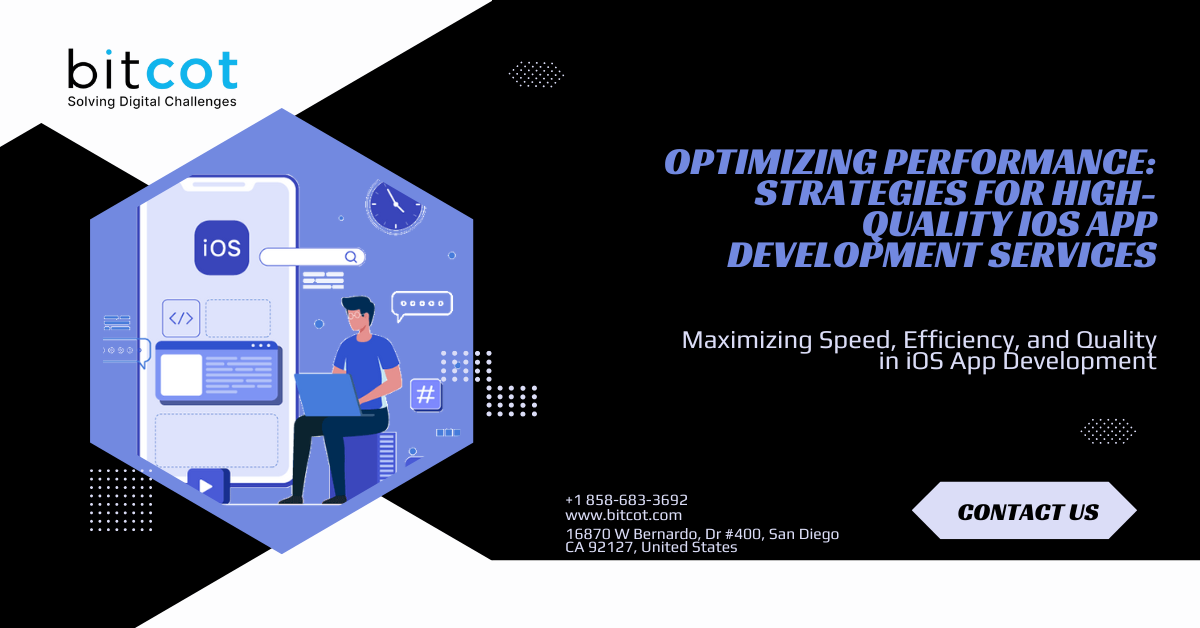Optimizing Performance: Strategies for High-Quality iOS App Development Services
 In the highly competitive world of mobile app development, performance optimization is a critical factor that can make or break the success of an iOS app. Users have high expectations for speed, responsiveness, and overall quality, and any issues with performance can lead to frustration and abandonment. Therefore, it’s essential for iOS app developers to implement strategies for optimizing performance throughout the development process. In this blog post, we’ll explore some key strategies for achieving high-quality performance in iOS app development services.
In the highly competitive world of mobile app development, performance optimization is a critical factor that can make or break the success of an iOS app. Users have high expectations for speed, responsiveness, and overall quality, and any issues with performance can lead to frustration and abandonment. Therefore, it’s essential for iOS app developers to implement strategies for optimizing performance throughout the development process. In this blog post, we’ll explore some key strategies for achieving high-quality performance in iOS app development services.
Efficient Codebase:
One of the fundamental principles of performance optimization is writing clean and efficient code. This includes using appropriate data structures and algorithms, minimizing memory usage, and avoiding unnecessary processing. By writing code that is optimized for performance from the outset, developers can lay a solid foundation for a high-quality app.
Thorough Testing:
Rigorous testing is essential for identifying and addressing performance bottlenecks in an iOS app. This includes both functional testing to ensure that the app behaves as expected and performance testing to measure factors such as load times, responsiveness, and resource usage. Automated testing tools can help developers identify performance issues early in the development process, allowing them to address them before they become major problems.
Optimized Graphics and Animations:
Graphics and animations can greatly enhance the user experience of an iOS app, but they can also have a significant impact on performance if not implemented properly. To optimize performance, developers should use lightweight graphics formats, minimize the use of complex animations, and implement hardware acceleration wherever possible. Additionally, developers should carefully manage memory usage to prevent excessive resource consumption.
Caching and Data Management:
Efficient data management is crucial for optimizing the performance of an iOS app, especially for apps that rely on large amounts of data. Caching frequently accessed data, minimizing network requests, and optimizing database queries can all help improve performance and reduce load times. Additionally, developers should implement strategies for managing memory usage and cleaning up resources to prevent memory leaks and other performance issues.
Optimized Network Communication:
For iOS apps that rely on network communication, optimizing network performance is essential for delivering a smooth and responsive user experience. This includes minimizing the size of network requests and responses, using compression where appropriate, and implementing techniques such as prefetching and lazy loading to reduce latency. Developers should also handle network errors gracefully to prevent disruptions to the user experience.
Continuous Optimization and Monitoring:
Performance optimization is an ongoing process that requires continuous monitoring and refinement. Even after an iOS app is released, developers should continue to monitor performance metrics and user feedback to identify areas for improvement. Regular updates and optimizations can help ensure that the app remains fast, responsive, and competitive in the ever-evolving landscape of mobile app development.
Conclusion:
Optimizing performance is essential for delivering high-quality iOS app development services. By implementing strategies such as writing efficient code, thorough testing, optimizing graphics and animations, managing data effectively, optimizing network communication, and continuous optimization and monitoring, developers can create iOS apps that offer a smooth and responsive user experience. By prioritizing performance optimization throughout the development process, developers can maximize the chances of success for their iOS apps in the competitive app market.
Also Read: Enhancing iOS App Aesthetics: Essential UI/UX Animations and Libraries
